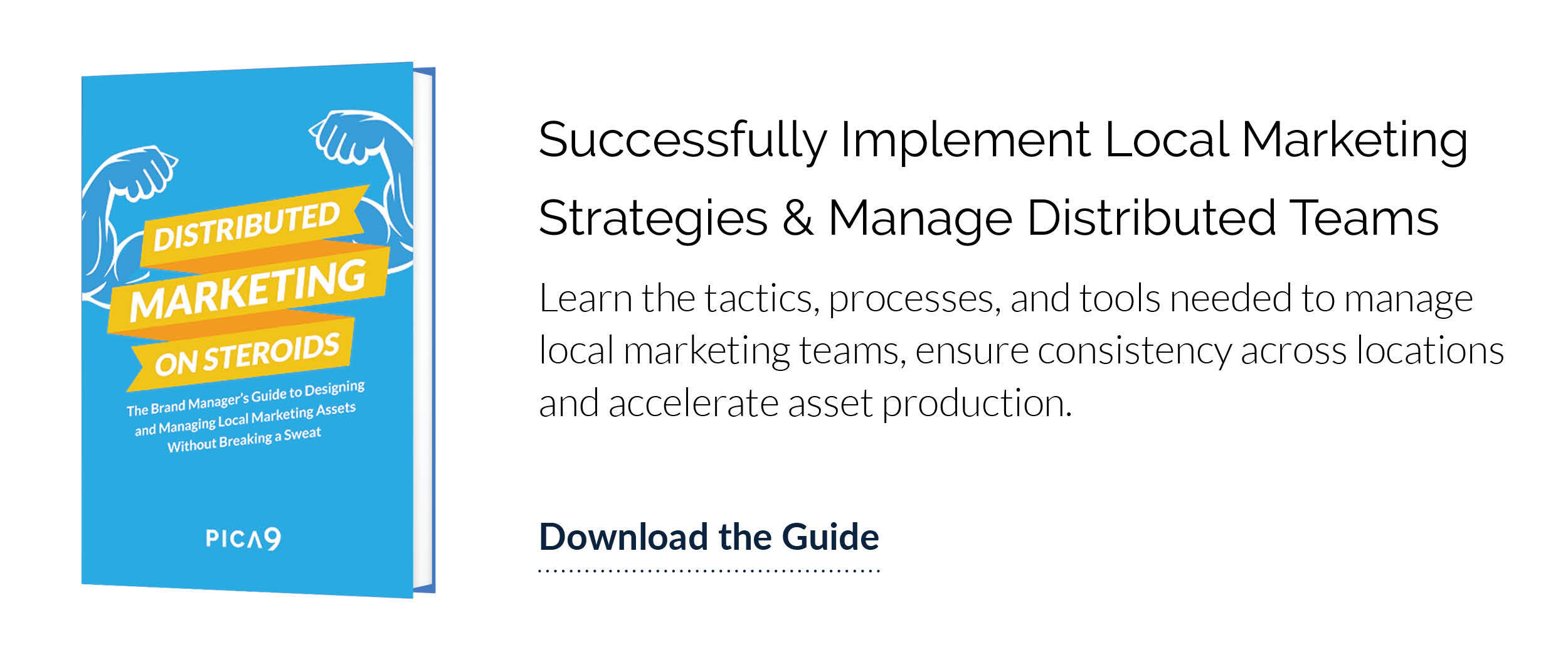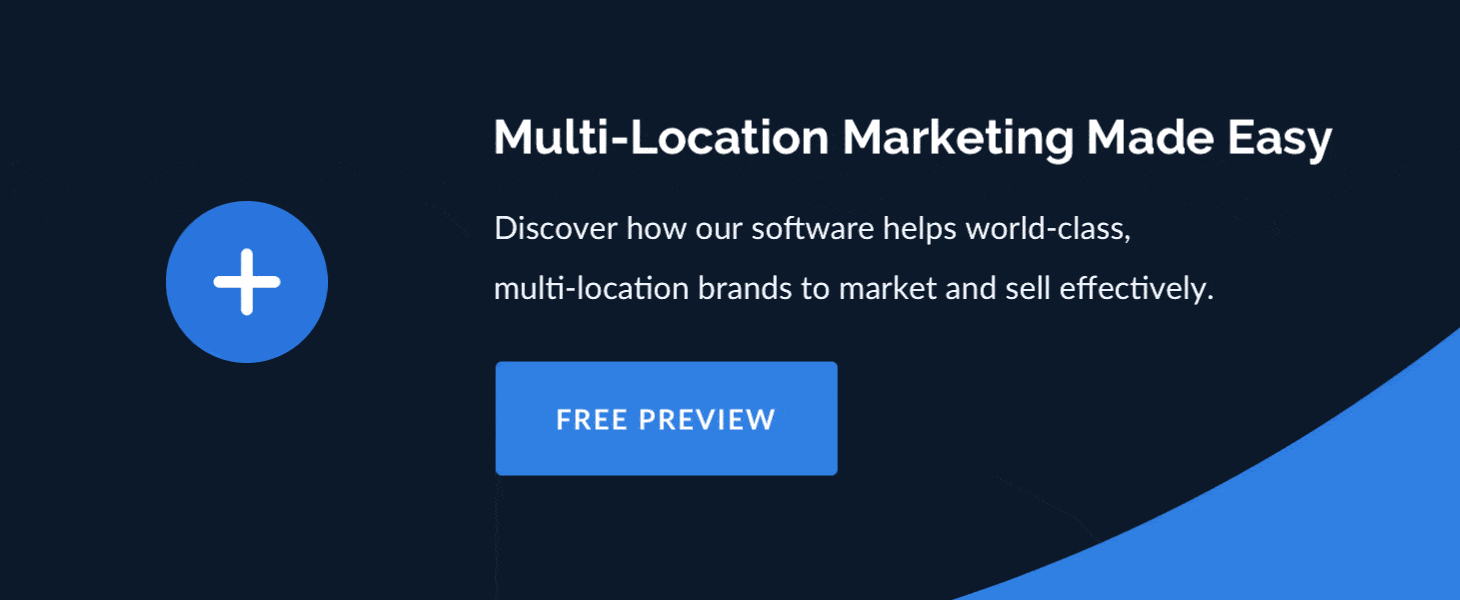All great distributed brands have robust Marketing Resource Management (MRM) tools in place and know how to leverage them to increase marketing efficiency.
How much of your marketing budget is your distributed organization leaving on the table each year in unused assets?
One IDC study revealed that at the average enterprise organization, only one-third of marketing assets are fully utilized. Considering that a single asset can cost tens of thousands of dollars, and require weeks of coordination and time to create, unused assets are not budget spent wisely.
At a distributed brand, the cost and efficiency issues associated with this bad marketing collateral management are compounded. An asset library that has hundreds of thousands of images, videos, audio files and other types of content – many of which go unused – is not uncommon at distributed brands. These libraries are often organized in a way that’s only accessible to a small number of team members, which leads to major bottlenecks. If your local marketers start relying on the brand management team to help them find the right assets, or you start seeing a higher-than-average turn around time for asset creation, it's a clear sign that these bottlenecks exist in your organization.
Technology that helps to better manage your marketing resources provides both brand and local marketers with an organized overview of the available assets for campaign use, and will reduce wasteful asset creation. If your organization is spending more than $1M on marketing each year, you have a good case for implementing a technical solution to asset management.
Read on to learn why distributed brands need to think about marketing resource management (MRM) a little differently than marketing teams at centralized enterprises, and how marketing resource management functions in today's Martech landscape.
MRM 2.0: 3 Core Functions Multi-Location Brands Need
Unlike a decade ago, organizations today are not necessarily going to be using a single tool that calls itself “MRM.” Instead, the idea of Marketing Resource Management has evolved to represent a category of software tools.
In today’s MarTech landscape, there’s an abundance of lightweight, efficient cloud apps that can be easily adopted and implemented. Understanding the technologies that make up MRM in 2017 is a good starting point when approaching the process of improving your technology.
In April 2017, Gartner announced “MRM 2.0," highlighting the shift in the enterprise marketing technology landscape away from centralized, all-in-one systems towards more agile, cloud-based options.
The definition of MRM 2.0 consists of three categories of technology:
- Work Management
- Asset Management
- Performance Management
Distributed marketing teams may use one tool, like a Distributed Digital Asset Management (DAM) system to manage their local marketing, while relying on a separate Work Management app for improving accountability in design work.
MRM 2.0 is a way of understanding how these different capabilities are essential for a marketing organization to operate at peak performance. Almost without exception, brands need all three of the functionalities outlined in Gartner’s definition. Without tools for tracking projects, managing assets, or evaluating performance, you’ll have trouble executing successful campaigns on a large scale.
MRM 2.0 Needs to “Push” and “Pull”
Distributed brands have a unique marketing structure. Instead of “pushing” assets out to various channels for advertising, like a centralized enterprise, distributed brands “push” and “pull” marketing materials between the brand management team and local marketers. You’re "pushing" assets out to the local level, but you’re also dealing with requests and input from the local level "pulling" you (like a franchisee asking for a customized, one-off ad).
This two-way marketing flow is one of the biggest reasons distributed brands need to think about MRM differently from their more centralized counterparts. Efficient communications with local marketers and customization at the local level are critical for these brands. They may not be well-served by the typical enterprise marketing technology stack that consists of tools like customer relationship management (CRM), email service providers (ESP), enterprise resource planning (ERP) and other centrally-owned tech.
Your MRM technologies need to be designed with both your brand management team and your local marketers in mind. Distributed organizations need a platform that offers ease-of-use, and enables local affiliates to find the assets they need, customize them quickly, deploy completed templates into the right channel and get on with running their local business.
MRM for Multi-Location Marketing
The best MRM tools for multi location marketing will solve key challenges – like tension about who controls campaign messaging, protecting brand standards and helping local marketers execute campaigns efficiently.
Distributed DAM tools are one of the most essential tools for brands operating multi-location marketing. Generally, these tools enable core functions, including:
- Accommodating all of your marketing assets, and making it easy to find them with easy-to-use search and browsing features.
- Support for local marketing execution with multi-channel marketing templates, and company-specific workflows.
- Industry-relevant requirements, if applicable, to help companies in highly-regulated industries operate within legal requirements.
- SaaS or Cloud-based tools, to support the need to quickly implement the tool and begin producing value as quickly as possible.
For more insight, we recommend Which Distributed DAM Tool is Right for Your Company?
The Best MRM For My Distributed Brand?
Process improvements and gains in efficiency are just one of the benefits of adding marketing technologies for asset management to your distributed brand's technology stack. Employing MRM 2.0 enables a modern approach to resource management; allowing distributed organizations to use technology in a way that fits their unique marketing needs.
What would it mean for your existing assets to drive higher ROI? Your local marketers are able to find what they need and your brand designers are able to efficiently reuse and repurpose your investments.
It's time for brands to look beyond their traditional marketing technology and embrace the aspects of MRM 2.0 that are designed specifically for what multi-location brands need to achieve. By selecting an option that supports both brand management teams and local marketers, organizations can ensure their technology is driving success at every level.
Learn how some of the world’s largest distributed brands use MRM 2.0 to improve brand consistency and boost sales: Distributed Marketing on Steroids: The Brand Manager’s Guide to Designing and Managing Local Marketing Assets Without Breaking a Sweat.

